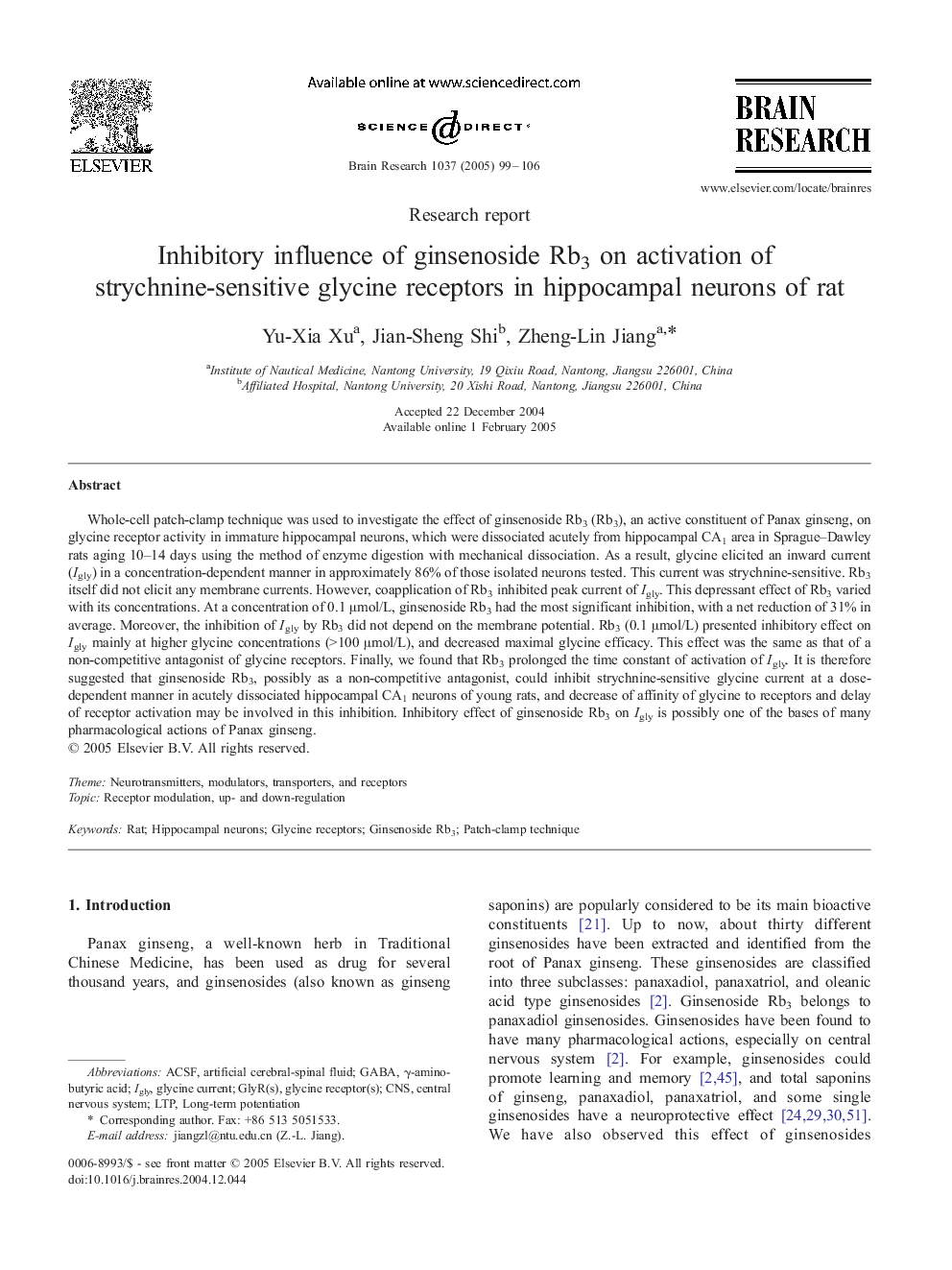| Article ID | Journal | Published Year | Pages | File Type |
|---|---|---|---|---|
| 9416643 | Brain Research | 2005 | 8 Pages |
Abstract
Whole-cell patch-clamp technique was used to investigate the effect of ginsenoside Rb3 (Rb3), an active constituent of Panax ginseng, on glycine receptor activity in immature hippocampal neurons, which were dissociated acutely from hippocampal CA1 area in Sprague-Dawley rats aging 10-14 days using the method of enzyme digestion with mechanical dissociation. As a result, glycine elicited an inward current (Igly) in a concentration-dependent manner in approximately 86% of those isolated neurons tested. This current was strychnine-sensitive. Rb3 itself did not elicit any membrane currents. However, coapplication of Rb3 inhibited peak current of Igly. This depressant effect of Rb3 varied with its concentrations. At a concentration of 0.1 μmol/L, ginsenoside Rb3 had the most significant inhibition, with a net reduction of 31% in average. Moreover, the inhibition of Igly by Rb3 did not depend on the membrane potential. Rb3 (0.1 μmol/L) presented inhibitory effect on Igly mainly at higher glycine concentrations (>100 μmol/L), and decreased maximal glycine efficacy. This effect was the same as that of a non-competitive antagonist of glycine receptors. Finally, we found that Rb3 prolonged the time constant of activation of Igly. It is therefore suggested that ginsenoside Rb3, possibly as a non-competitive antagonist, could inhibit strychnine-sensitive glycine current at a dose-dependent manner in acutely dissociated hippocampal CA1 neurons of young rats, and decrease of affinity of glycine to receptors and delay of receptor activation may be involved in this inhibition. Inhibitory effect of ginsenoside Rb3 on Igly is possibly one of the bases of many pharmacological actions of Panax ginseng.
Keywords
Related Topics
Life Sciences
Neuroscience
Neuroscience (General)
Authors
Yu-Xia Xu, Jian-Sheng Shi, Zheng-Lin Jiang,
